Our Hires
Find out about our extensive hire services.
Tell Me MoreA unique presence in the London entertainment scene since it was established in 1932, Regent’s Park Open Air Theatre presents award-winning productions within the beautiful surroundings of a Royal Park. Recently expanded to 1304 seats, it is also the largest amphitheatre-style flat floor arena in the UK and features its own rehearsal room, breakout spaces, box office and hospitality area. The 2023 season features two musicals and two plays in the main auditorium plus other shows designed mainly for younger audiences presented on the theatre lawn.
Since the theatre’s production of Ragtime in 2012, Autograph Sound have supplied the audio system for the auditorium and their Senior Sound Designer Nick Lidster has handled its design ever since. For the 2023 season he has also sound-designed the musicals Once On This Island (May 10th to June 10th) and La Cage Aux Folles (July 29th to September 16th). He led a team comprising Niamh Gaffney (Associate Sound Designer), Jamie Forester, Candice Weaver, James Hassett (sound numbers 3, 2 and 1 respectively) and Larry Golland, Production Sound Engineer for the season.
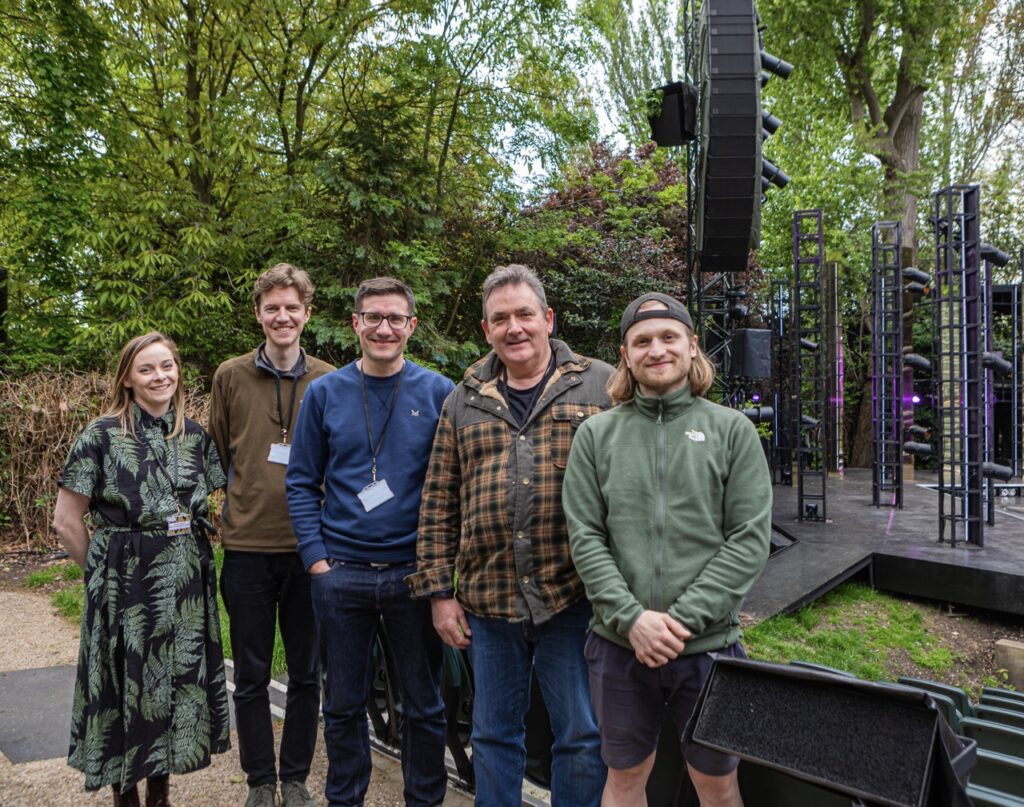
Nick talks about his work at Regent’s Park and some of the challenges in delivering a contemporary theatre experience in a unique setting:
“There’s a number of things that are distinctive about designing a system for the Open Air Theatre, but the first is entirely practical in that all the loudspeakers have to be properly weatherproofed and able to deal with the wide temperature range during the four months they’re on site. At the beginning and end of the season it can be chilly and in midsummer it can get very warm – last year we had temperatures over 40C in the auditorium at one point – so it’s quite a test for the gear and we have to be on top of keeping it working properly throughout. There’s also the rather more prosaic issue of having to keep parrot and pigeon droppings off the equipment(!) and so we use specially-made rain and poop-proof fabric covers that protect the rear and sides of the loudspeakers.”
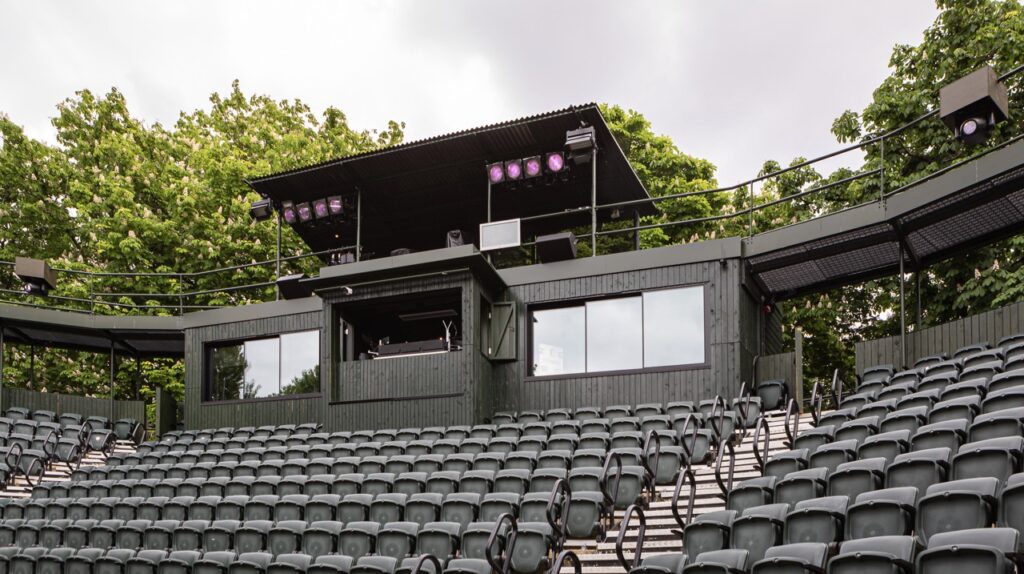
“For 2023 it’s actually a completely new system, driven partly by the expanded capacity but also because of the necessity to provide separate, powerful surround and special effects loudspeakers. That comes from having to meet the expectations of a modern audience in terms of delivering an engaging audio experience that covers the entire audience area, but also because it allows designers to refocus a specific audio image if they need to, for example, if a performer enters the arena from a point somewhere well away from the stage.”
“There’s also the issue that we are in the middle of a major city and that means there can be background noise – helicopters, vehicle sirens, all sorts – so the audio needs to be quite punchy, especially considering that the distance from the PA to the most distant seats is 35 meters. However, it’s not just about volume – generating an immersive audio field which entirely envelops the whole audience is vital here, partly to deal with background noise but also to keep the audience within the narrative of the show.”
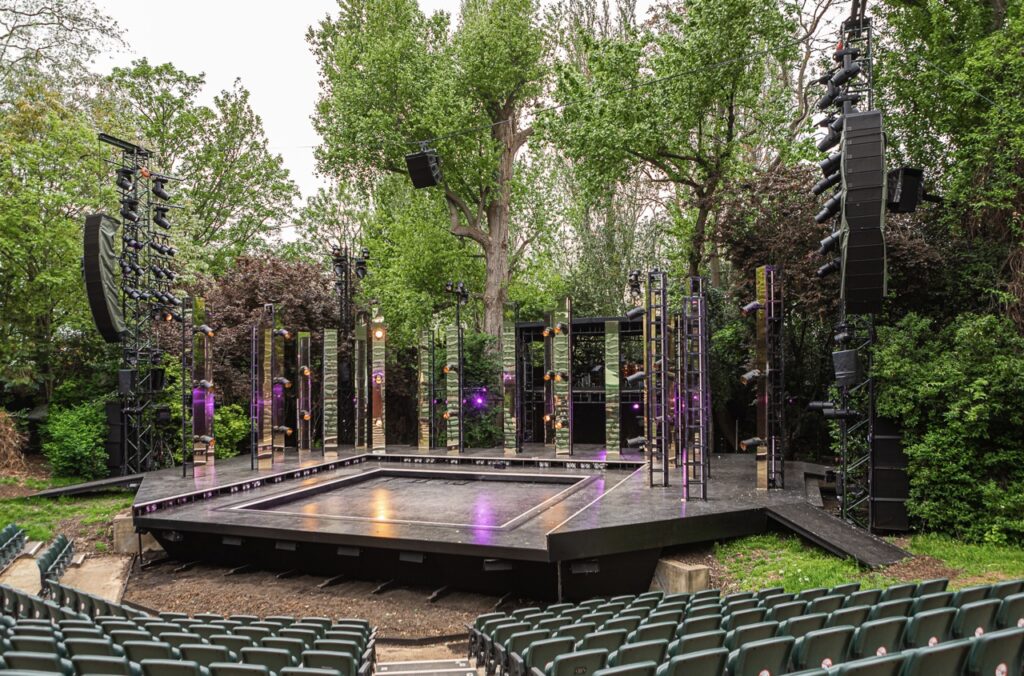
Nick continues, “To an extent we try to replicate the audio infrastructure and quality of results that we would expect in an indoor theatre. Achieving that same quality is both easier and harder here – easier because obviously there are no reflections to muddy the sound, the audience hears only what is coming out of our loudspeakers, but it is harder because there’s no help with warmth or sense of space either. Every aspect of a sense of acoustics must be delivered through the various loudspeaker systems.” Autograph have just installed a brand new permanent backstage call system and also supplied site-wide radio comms equipment for the season.
“The principal difference though is that this design needs to fit all the shows presented through the season, whereas a theatre design would be bespoke to a single production. There might for example be fewer separate effects speakers in a theatre production, as more of the effects would be dialled into the main PA. I try to mimic an indoor design as far as possible in terms of the results for the audience, but here we are trying to create an immersive audio environment outdoors with everything that entails, in terms of the live mix, there’s some of everything in everything.”
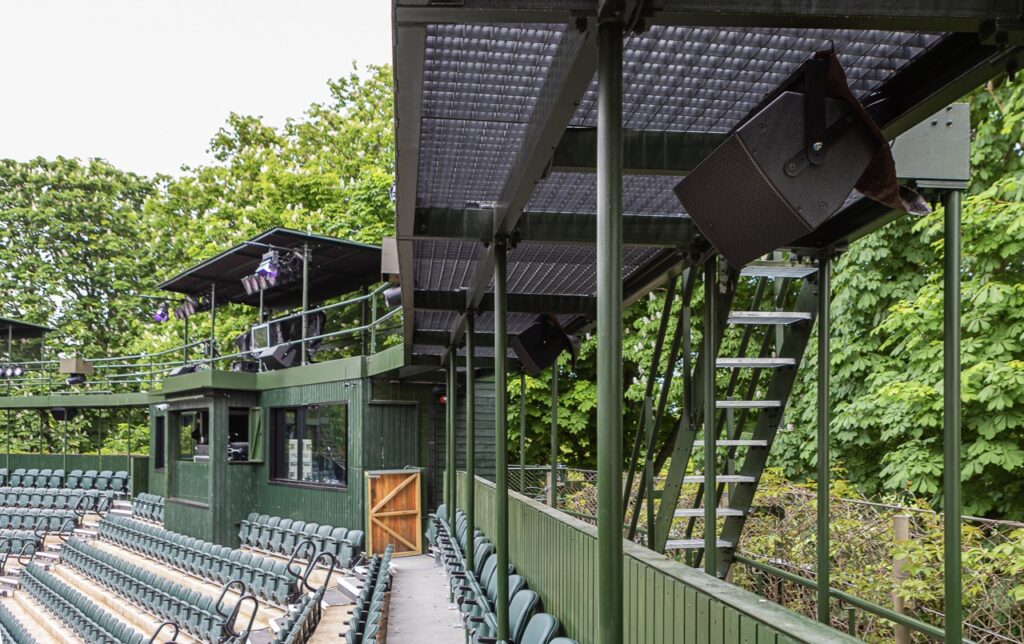
Nick is wearing two hats, as both the designer of the principal system, but also the show sound designer for the musicals. How does that work?
“The main PA handles the heavy lifting for all shows in the main auditorium, in that it comfortably covers every seat in the house with full-range, highly intelligible audio. That rig comprises a main L&R plus a centre cluster, plus front fills, sidefills, delays and subwoofers. On top of that is a surround system using ten individual loudspeakers flown around the rear of the arena, plus a number of surround delays located on the middle auditorium walkway.
“Then there is a separate, flexible system for sound effects or anything else a designer might want, which can be deployed as they wish and according to their show. I design the main PA so that it’s flexible enough to handle both musicals with a live band and spoken-word plays, which a visiting sound designer can then augment with the secondary sound effects system if they wish.”
Nick concludes, “One of the reviews from Once On This Island described the sound as ‘Loud but never overbearing…’ so hopefully we’ve got it right!.”
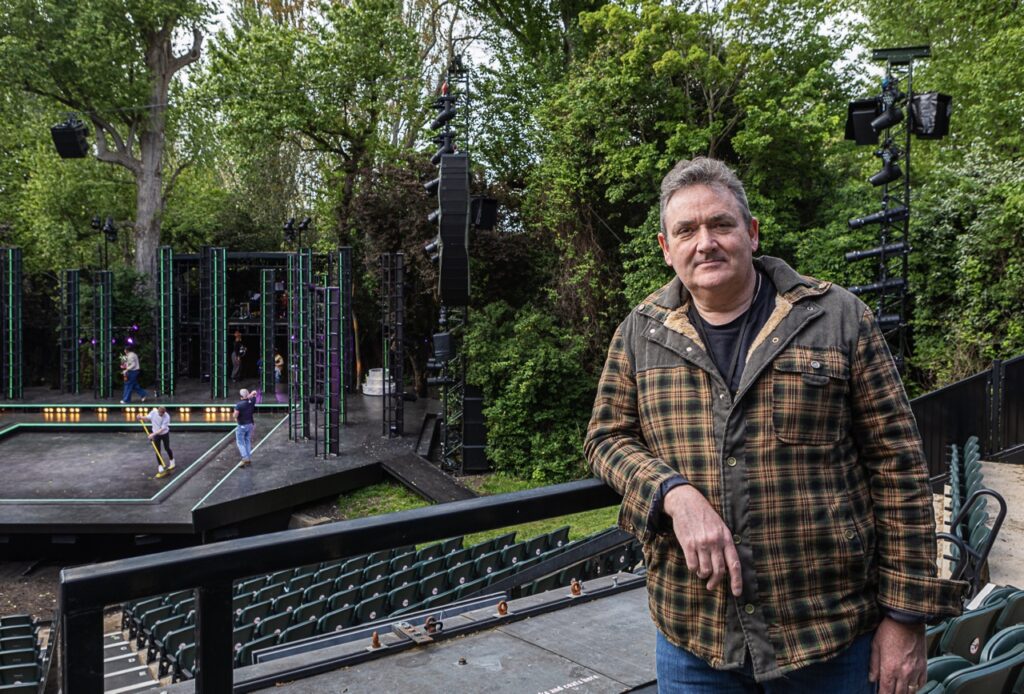
Photo Credits: Graham Chrimes
Key equipment:
DiGiCo SD10T digital audio mixing console
d&b audiotechnik, EM Acoustics and Meyer Sound loudspeakers
Shure Axient Digital wireless microphones
Motorola comms